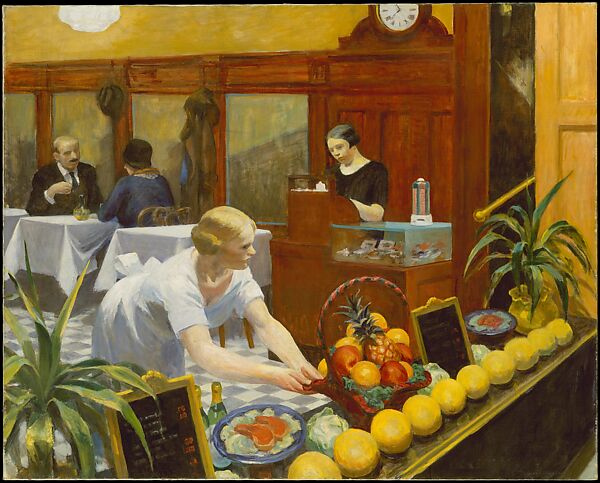The definition and evaluation of art has become especially problematic since the 20th century. Richard Wollheim distinguishes three approaches:
An object may be characterized by the intentions, or lack thereof, of its creator, regardless of its apparent purpose. A cup, which ostensibly can be used as a container, may be considered art if intended solely as an ornament, while a painting may be deemed craft if mass-produced.Traditionally, the term art was used to refer to any skill or mastery. This conception changed during the Romantic period, when art came to be seen as "a special faculty of the human mind to be classified with religion and science". Generally, art is made with the intention of stimulating thoughts and emotions.The nature of art has been described by Richard Wollheim as "one of the most elusive of the traditional problems of human culture". It has also been defined as a vehicle for the expression or communication of emotions and ideas, a means for exploring and appreciating formal elements for their own sake, and as mimesis or representation. Leo Tolstoy identified art as a use of indirect means to communicate from one person to another. Benedetto Croce and R.G. Collingwood advanced the idealist view that art expresses emotions, and that the work of art therefore essentially exists in the mind of the creator. The theory of art as form has its roots in the philosophy of Immanuel Kant, and was developed in the early twentieth century by Roger Fry and Clive Bell. Art as mimesis or representation has deep roots in the philosophy of Aristotle.
The visual arts are art forms that create works that are primarily visual in nature, such as ceramics, drawing, painting, sculpture, printmaking, design, crafts, photography, video, filmmaking, computer art and architecture. Definitions should not be taken too strictly as many artistic disciplines such as performing arts, conceptual art, textile arts involve aspects of the visual arts as well as arts of other types, including the applied arts such as industrial design, graphic design, fashion design, interior design and decorative art.
A significant contribution to European art apart from the illuminated manuscripts produced by monks during the Middle Ages, music, dance and literature, was from Italy's renaissance painters. From Giotto in the 13th century to Leonardo da Vinci and Raphael at the beginning of the 16th century, this was the richest period in Italian art as the chiaroscuro technique was used to create the illusion of 3-D space.
Painters in northern Europe too were influenced by the Italian school. Jan van Eyck from Belgium, Pieter Bruegel the Elder from the Netherlands and Hans Holbein the Younger from Germany are among the most successful painters of the times. They used the glazing technique with oils to achieve depth and luminosity.
The 17th century saw the emergence of the great Dutch masters such as the versatile Rembrandt who is especially remembered for his portraits and Bible scenes, and Vermeer who specialized in interior scenes of Dutch life. Impressionism began in France in the 19th century with a loose association of artists including Claude Monet, Pierre-Auguste Renoir and Paul Cézanne who brought a new freely brushed style to painting, often choosing to paint realistic scenes of modern life outside rather than in the studio. They achieved intense colour vibration by using pure, unmixed colours and short brush strokes. Towards the end of the 19th century, several young painters took impressionism a stage further, using geometric forms and unnatural colour to depict emotions while striving for deeper symbolism. Of particular note are Paul Gauguin, who was strongly influenced by Asian, African and Japanese art, Vincent van Gogh, a Dutchman who moved to France where he drew on the strong sunlight of the south, and Toulouse-Lautrec, remembered for his vivid paintings of night life in the Paris district of Montmartre Edvard Munch, a Norwegian artist, developed his symbolistic approach at the end of the 19th century, inspired by the French impressionist Manet. The Scream (1893), his most famous work, is widely interpreted as representing the universal anxiety of modern man. Partly as a result of Munch's influence, the German expressionist movement originated in Germany at the beginning of the 20th century as artists such as Ernst Kirschner and Erich Heckel began to distort reality for an emotional effect.
In parallel, the style known as cubism developed in France as artists focused on the volume and space of sharp structures within a composition. Pablo Picasso and Georges Braque were the leading proponents of the movement. Objects are broken up, analyzed, and re-assembled in an abstracted form. By the 1920s, the style had developed into surrealism with Dali and Magritte.
Prints in the Western tradition produced before about 1830 are known as old master prints. In Europe, from around 1400 AD woodcut, was used for master prints on paper by using printing techniques developed in the Byzantine and Islamic worlds. Michael Wolgemut improved German woodcut from about 1475, and Erhard Reuwich, a Dutchman, was the first to use cross-hatching. At the end of the century Albrecht Dürer brought the Western woodcut to a level that has never been surpassed, increasing the status of the single-leaf woodcut.





